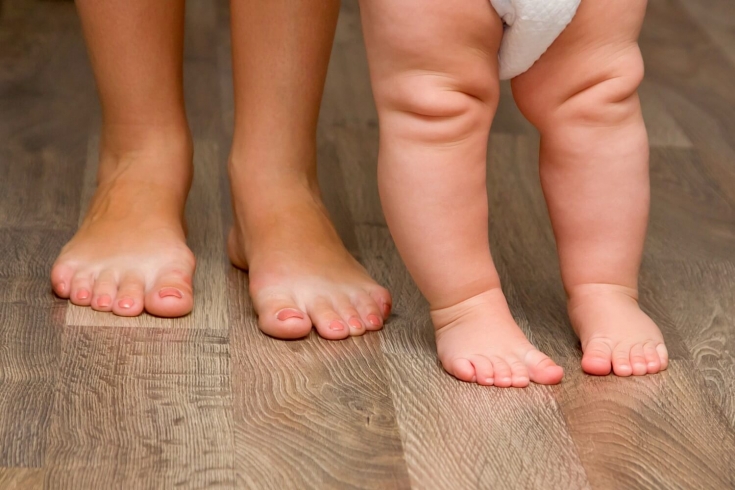Clubfoot – This is a fairly common pathology of foot development. This disease can be either congenital or acquired. An untreated defect not only makes it difficult to move, but can also lead to deformation of the leg bones and other pathologies.
Having learned about the presence of such a defect in their baby, parents begin to sound the alarm and turn to all possible specialists: orthopedists, chiropractors and massage therapists. But are there any proven ways to treat this defect today? Why does the child begin to clumsy? To all these questions estet-portal. com will answer in this article.
Causes of disease in young children
Oddly enough, a disease such as clubfoot can be caused by a lot of factors. The causes of the disease can be very different; everything depends on whether the baby was born with such a problem or a defect is purchased.
Congenital defect occurs in case:
- strong pressure of womb on the feet of the baby in the womb, as a result of hemodynamics is disturbed and the bones of the foot are deformed;
- use of certain drugs during the first trimester
pregnancy;
- takingtoxic substances (alcohol, nicotine) during pregnancy;
- developmental pathologies of muscles and ligaments
- heredity.
Congenital pathology is far not always is an independent disease. In some cases this defect is a symptom of one or other system developmental malformation.
The development of acquired disease may become:
• incorrect joint bones ankle joint after fracture;
• severe burns foot benign and malignant tumors.
In addition, there atypical clubfoot. This type is caused by birth injuries.
Signs and symptoms of foot deformity in infants
The main symptoms of the disease are:
equinus deformity (the outer side of the foot is lowered, and the inner – is raised);
varus deformity, (foot rests on the outer part);
- restriction of ankle function;
- ankle twist.
- Acquired deformity of the foot is noticeable by signs such as:
- Waddling from foot to foot while walking;
Incorrect foot placement;
- Curvature of the legs (knees "look" inward).
 To begin with, only a professional doctor should diagnose clubfoot. It is by no means possible to apply all sorts of methods to eliminate the problem, on the basis of a self-diagnosis.
To begin with, only a professional doctor should diagnose clubfoot. It is by no means possible to apply all sorts of methods to eliminate the problem, on the basis of a self-diagnosis.
Treatment for congenital clubfoot
can be started almost as soon as a problem is identified. To date, there are two main methods of treatment: conservative and surgical.Conservative treatments include:
soft dressings;
- physiotherapy exercises;
- use of paraffin packs;
- corrective casting;
- use of special rigid bandages and structures (splints, orthoses);
- physiotherapy;
- taking medications.
- If conservative methods do not give the desired result, one should resort to surgical intervention. It should be noted that it is not worth postponing the operation: a neglected disease can provoke deformation of bones and muscles.
- Modern medicine allows you to successfully get rid of clubfoot in the vast majority of cases. If you notice that your baby is clubfoot, consult a doctor and he will prescribe the appropriate treatment for your child. And if you have any other questions on which you would like to get more information, estet-portal will help you with this. com.






Add a comment